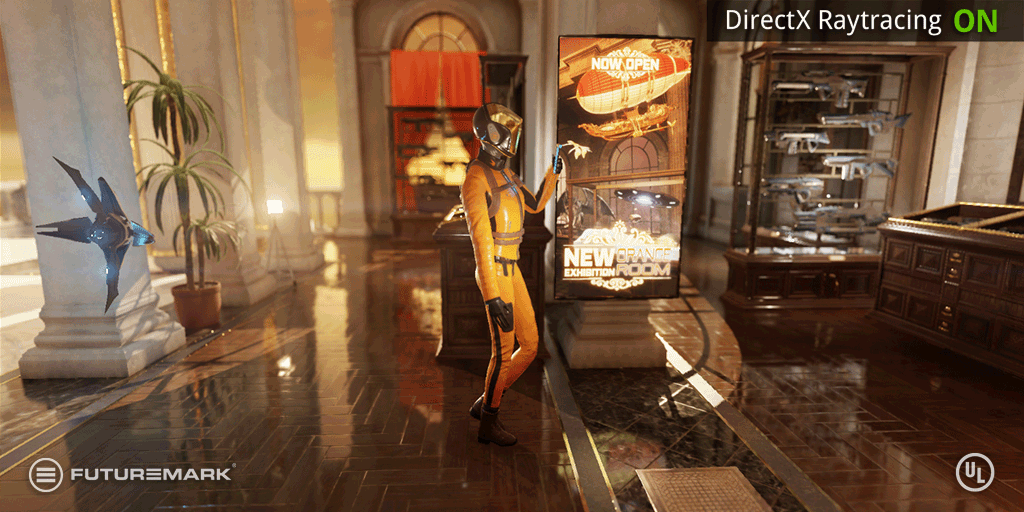Futuremark DirectX Raytracing Tech Demo Showcases Rich Real-Time Reflection Rendering

Futuremark, the company behind the popular 3DMark and PCMark benchmarks that are widely used by reviewers (us included) and enthusiasts alike, has a released technology demo showcasing real-time raytracing effects. The demo is built around Microsoft's new DirectX Raytracing (DXR) API, which allows any graphics card supporting DirectX 12 to leverage raytracing techniques to "naturally and efficiently" fill in the gaps left by rasterization.
Raytracing might very well be the future of graphics rendering in everyday applications, and in particular games, eventually replacing rasterization techniques completely. For that day to come, there needs to be significant advancements in hardware, as the realism that raytracing provides requires copious calculations beyond the scope of what today's graphics cards are capable of.
That said, Microsoft is looking to usher in the future with DXR, which enables certain raytracing workloads to run on current generation hardware. NVIDIA quickly jumped on board by adding a raytracing denoiser module to its GameWorks SDK to enable support for raytraced glossy reflections, ambient occlusion, and area shadows, and several developers have committed to supporting the new tools.
Futuremark's tech demo gives us a taste of what to expect through this industry-wide effort. The demo (embedded above) runs in real-time on existing GPU hardware and shows off the types of visuals that raytracing brings to the table.
"Rendering accurate reflections in real-time is difficult. There are many challenges and limitations when using the existing methods. For the past few months, we've been exploring ways of combining DirectX Raytracing with existing methods to solve some of these challenges. While much of our presentation went deep into the math for our solution, we'd like to show you some examples of our new technique in action," Futuremark said.

There are several things of note, such as the accurate real-time reflections of dynamic objects, along with those that exist outside of the screen space. By tracing paths of light, images take on a much more realistic look compared to rasterization rendering, the latter of which requires a bevy of increasingly complex tricks to produce high levels of detail. Reflections from raytracing also benefit other surfaces, not just mirrors, allowing for glossy floors that look as we would expect them to in the real world.
Futuremark's demo is an interesting look at examples of things to come.
"Raytracing is not a new technique, but until recently it has been too computationally demanding to use in real-time games. With modern GPUs, it's now possible to use rasterization for most of the rendering and a smaller amount of raytracing to enhance shadows, reflections, and other effects that are difficult to achieve with traditional techniques," Futuremark says.
And in case you are wondering, yes, Futuremark will feature DXR in an upcoming 3DMark release, pegged for release towards the end of the year.

